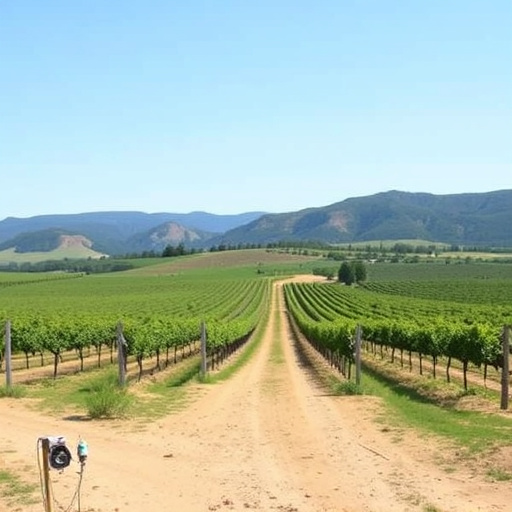Sonoita, Arizona, can transform its wine tourism by introducing wheelchair-accessible shuttles, addressing a significant gap in the current market. By collaborating with accessibility experts and engineers, custom shuttle designs can provide wide entry, ample space, and securement for individuals with mobility challenges. These shuttles will enable all visitors to enjoy the region's vineyards and wine culture, fostering inclusivity and boosting local tourism. Recent implementations by wineries have already shown positive impacts on visitor experience and satisfaction, making Sonoita a leading example of accessible wine tourism.
Experience the enchantment of wine country without barriers! Discover how wheelchair-accessible shuttle transport is revolutionizing inclusive wine tour experiences in Sonoita and beyond. From ensuring equal access to enhancing overall enjoyment, this innovative approach transforms traditional tours. Learn about the design considerations, best practices, and real-world success stories that make accessible wine tourism a thriving reality. Elevate your next wine adventure with these inclusive innovations.
- The Need for Accessible Wine Tours: Ensuring Inclusive Experiences
- Designing Wheelchair-Accessible Shuttles for Wine Country Adventures
- Best Practices and Benefits of Integrating Accessibility in Wine Tourism
- Case Studies: Successful Wheelchair-Accessible Wine Tour Implementation
The Need for Accessible Wine Tours: Ensuring Inclusive Experiences

In the picturesque region of Sonoita, known for its vibrant wine culture, ensuring accessible experiences for all is paramount. Traditional wine tours often present challenges for individuals using wheelchairs, creating a barrier to inclusion. This gap in accessibility highlights the need for specialized services that cater to this unique demographic, allowing everyone to enjoy the scenic vineyards and participate in the rich sensory experience of wine appreciation.
By introducing wheelchair-accessible shuttle transport, Sonoita can revolutionize its wine tourism scene. Such initiatives not only fulfill a social responsibility but also open up opportunities for diverse travelers. This inclusive approach promises to enhance the overall visitor experience, ensuring that wine tours in Sonoita are truly accessible and welcoming to all, regardless of mobility challenges.
Designing Wheelchair-Accessible Shuttles for Wine Country Adventures

Designing wheelchair-accessible shuttles for wine country adventures in Sonoita presents a unique opportunity to enhance inclusivity and accessibility. These vehicles must be meticulously crafted to cater to individuals with diverse needs, ensuring comfort, safety, and ease of navigation throughout the picturesque vineyards and scenic routes. The process involves collaborating with experts in both disability access and vehicle engineering to create customized solutions.
Key considerations include wide entry points for easy wheelchair boarding, ample interior space for riders’ comfort, and low-floor designs that minimize step heights. Advanced features such as securement systems, ramp accessibility, and climate control further contribute to a seamless experience. By prioritizing these design elements, wine tour operators in Sonoita can offer memorable journeys that embrace all visitors, fostering a true sense of community and enjoyment in the heart of wine country.
Best Practices and Benefits of Integrating Accessibility in Wine Tourism

Integrating wheelchair-accessible shuttle transport into wine tourism offers a multitude of benefits, both for tour operators and visitors with mobility challenges. Best practices include ensuring shuttles are specifically designed or modified to accommodate wheelchairs, featuring low entry points, space for companions, and secure attachment mechanisms. Regular maintenance and training for staff on accessibility protocols are crucial.
Wine tours in areas like Sonoita can become truly inclusive when these practices are implemented. It allows a wider range of individuals to enjoy the scenic beauty, learn about viticulture, and partake in tastings—experiences previously inaccessible. This inclusivity not only enriches personal journeys but also contributes to the industry’s growth by appealing to a broader demographic, fostering positive word-of-mouth, and potentially boosting local economies through increased visitor engagement and satisfaction.
Case Studies: Successful Wheelchair-Accessible Wine Tour Implementation

In recent years, several wineries in Sonoita have successfully implemented wheelchair-accessible shuttle transport systems, transforming their wine tour experiences into inclusive events for all visitors. These case studies highlight the importance of accessibility and its positive impact on the overall visitor experience. For instance, some wineries introduced specialized shuttles equipped with raised floors and securement points, allowing wheelchair users to travel comfortably alongside their able-bodied counterparts.
The strategic placement of shuttle stops at various locations across the vineyard ensures that all visitors can easily access different wine tasting areas. This inclusive approach not only enhances accessibility but also encourages interaction among tour participants. As a result, wine tours in Sonoita have become more welcoming and enjoyable for people with disabilities, fostering a sense of community and shared appreciation for the region’s renowned wines.
Wine tourism is a vibrant industry, and making it inclusive for all, including those using wheelchairs, is essential. By designing and implementing wheelchair-accessible shuttle transport, wine regions like Sonoita can revolutionize their tour experiences. This article has explored the need for accessible wine tours, innovative shuttle designs, best practices, and successful case studies, showcasing that inclusivity enhances the overall tourist experience. Embracing accessibility not only opens up a world of possibilities for people with disabilities but also enriches the diversity and appeal of wine country adventures.
